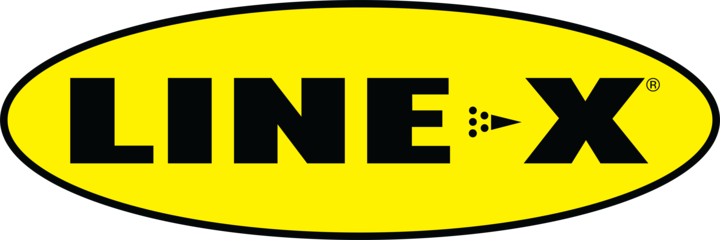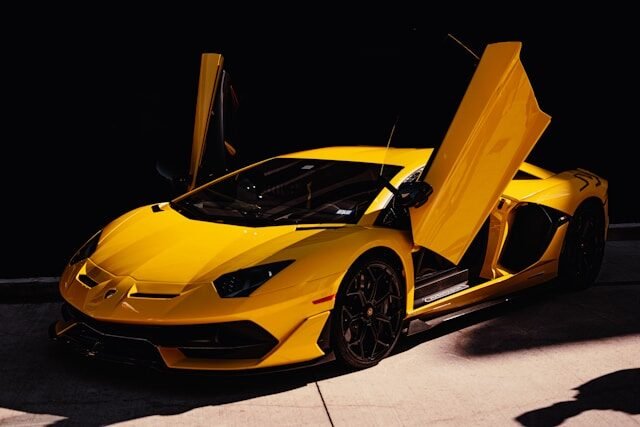Window tint isn’t just about looks—it’s about comfort, protection, and performance. Whether you’re trying to keep your car cool in the brutal Florida sun, reduce glare in your office, or maintain privacy at home, choosing the right window tint shade matters. But with so many types and percentages of window film out there, how do you know which one is right for you? At LINE-X AUTO SPA, we break it all down—shade by shade, film by film—so you can make the best decision for your needs.
Why Window Tint Matters More Than You Think
Sure, tinted windows make your ride look sleeker—but that’s just scratching the surface. Window tinting plays a major role in UV protection, heat rejection, energy efficiency, and even glare reduction. The right film can reduce solar heat gain, preserve your interior upholstery, and shield your skin from long-term sun damage. In sunny areas like Palm Beach, FL, this isn’t a luxury—it’s practically a necessity.
LINE-X AUTO SPA installs high-performance films that don’t just look good—they do good, for your vehicle, home, or business.
Understanding Window Tint Shades: A Quick Overview
Window tint shades are categorized by Visible Light Transmission (VLT)—a percentage that indicates how much visible light can pass through the glass. Lower VLT percentages mean darker tint.
Here’s a quick cheat sheet:
- 5% VLT: Very dark; maximum privacy, often called limo tint
- 20% VLT: Dark appearance, offers strong privacy
- 35% VLT: Balanced appearance, often close to factory tint
- 50% VLT: Light shading, still offers glare control
- 70% VLT: Nearly transparent, but offers UV and heat protection
Different shades serve different purposes. Whether you prioritize automotive style, privacy glass film, or interior heat control, there’s a VLT level to match.
The Science Behind VLT: What Those Numbers Actually Mean
VLT is the percentage of visible light that a tint allows through the window. So a 20% tint lets in 20% of the light and blocks 80%—not the other way around. This makes a huge difference in both visibility and solar control. Lower VLT values will result in better interior cooling and more privacy, but they can reduce visibility—especially at night.
That’s why understanding VLT is more than technical trivia. It directly affects how you experience your vehicle or building on a daily basis. At LINE-X AUTO SPA, we help customers match the right tint shade with their comfort, safety, and legal requirements.
Florida Window Tint Laws: What You Need to Know
Florida takes window tinting seriously, and so should you. The law outlines specific VLT limits depending on your vehicle type. Failure to comply can result in fines or having to remove your tint.
Florida Tint Laws for Sedans:
- Front Side Windows: Must allow more than 28% of light in
- Back Side Windows: Must allow more than 15%
- Rear Window: Must allow more than 15%
Florida Tint Laws for SUVs/Vans/Trucks:
- Front Side Windows: More than 28%
- Back Side + Rear Windows: Any darkness allowed
Also note that reflective tint is restricted to no more than 25% reflectivity on the front and 35% on the rear. At LINE-X AUTO SPA, we stay up-to-date on all state laws, so you won’t have to guess.
How to Choose the Right Window Tint Shade for Your Car
Choosing the best car window tint shade depends on your lifestyle, driving habits, and how much sunlight your vehicle typically gets. Here’s how to think about it:
- Need Privacy? A 20% VLT or lower will keep prying eyes out.
- Want a Factory Look? Go with 35%—clean, stylish, and widely accepted.
- Night Driving Often? Stick with 35% or higher for better visibility.
- Maximum Heat Rejection? Pair a mid-level VLT (like 35%) with ceramic tint film for incredible cooling.
Ceramic and carbon-based tint are especially popular for drivers who want high performance without the ultra-dark look. At LINE-X AUTO SPA, we specialize in recommending shades that meet your needs and legal obligations.
Window Tint Shade Options by Type
1. Limo Tint (5% VLT)
This is the darkest shade legally available for rear windows in most vehicles. It’s called “limo tint” for a reason—it offers maximum privacy and UV defense.
- Pros: Great for protecting valuables, reducing glare, and blocking heat
- Cons: Nearly impossible to see through at night; illegal for front windows in Florida
2. Dark Tint (20% VLT)
Popular among drivers who want privacy without sacrificing too much night vision. It strikes a solid balance.
- Pros: Stylish and private
- Cons: Still may be illegal for front windows depending on local law
3. Medium Tint (35% VLT)
Often mimics the factory tint found on many vehicles. It gives your car a polished look while still letting in a good amount of light.
- Pros: Legal in most areas; balanced visibility and protection
- Cons: Not as much privacy as darker films
4. Light Tint (50% VLT)
If you want moderate solar rejection without drastically altering the appearance of your vehicle, this is a solid choice.
- Pros: Reduces glare, offers a clean look
- Cons: Minimal privacy benefits
5. Barely There Tint (70% VLT)
Perfect for windshields or customers who just want UV blocking window film without any noticeable shade.
- Pros: Great for skin protection, legal everywhere
- Cons: Won’t significantly cool down your cabin
How Window Tint Shades Affect Heat and UV Protection
A common misconception is that darker shades always provide better heat rejection. That’s not necessarily true. It depends on the type of window film, not just the VLT. For example, ceramic films are engineered to block infrared radiation—the real culprit behind heat—without going dark.
At LINE-X AUTO SPA, we carry ceramic window tint, carbon films, and dyed films, each with different heat-blocking properties. Want 70% VLT that still blocks 99% of UV rays and 80% of heat? We’ve got it.
Reflective vs. Non-Reflective Tint Shades: What’s the Difference?
Reflective window film uses a metallic layer to bounce sunlight, whereas non-reflective (or dyed/ceramic) films absorb it.
- Reflective Tint: Offers strong solar heat gain control, but can create a mirror-like effect from the outside
- Non-Reflective Tint: Subtler appearance, better for aesthetics but may offer slightly less heat rejection depending on film quality
We help customers choose between function and form—or sometimes both.
Matching Window Tint Shades to Your Vehicle Color
Believe it or not, the aesthetic of your tint changes depending on your car’s paint color.
- White Cars: Look sharp with 5% or 20% for bold contrast
- Black Cars: Pair well with medium (35%) tint for a seamless look
- Silver or Gray Cars: Often pop with darker tint for a modern finish
- Red/Blue/Other Bright Colors: 35% or 50% provides contrast without overpowering the vehicle’s natural shade
LINE-X of AUTO SPA always considers vehicle color and customer style before applying a film.
How Long Do Window Tint Shades Last?
The lifespan of your tint depends on both the film quality and the environment. Basic dyed tint may last 2–3 years before they start to bubble, peel, or fade. Carbon or ceramic window tint films, on the other hand, can last up to 10 years with proper maintenance.
Other factors that affect lifespan include:
- Sun exposure
- Interior temperatures
- Installation quality
- Cleaning practices
That’s why our team at LINE-X AUTO SPA uses premium-grade films and professional installation techniques to ensure your tint stands the test of time.
Can You Combine Different Window Tint Shades?
Yes, and this is actually quite common. Known as staggered tinting, it lets you comply with legal tint levels on the front windows while still achieving greater privacy and performance in the rear.
Example:
- 35% VLT in the front
- 20% or 15% in the back
This combo is especially popular with SUVs and trucks. We frequently recommend custom configurations that balance privacy, visibility, and legality.
Best Window Tint Shades for Home Windows
Residential tint is about more than comfort—it’s about efficiency and protection. Home window film shades come in multiple VLT levels, but the most popular options include:
- 70% VLT: Virtually clear but blocks 99% of UV rays
- 35%–50% VLT: Helps cool down rooms without making your windows look too dark
- 20% VLT: Great for bathrooms, bedrooms, or other privacy-focused spaces
Adding residential window tint can reduce energy bills, increase comfort, and protect furniture from fading.
Best Window Tint Shades for Commercial Buildings
Commercial window tinting focuses on both performance and branding. You want employees and customers to stay cool while maintaining a professional look.
Recommended shades:
- Reflective 20–35% Tint: Provide superior glare control and energy efficiency
- Frosted or Decorative Films: Add privacy to offices or conference rooms without making them feel dark
We work with Palm Beach-area offices, retail stores, and medical facilities to create clean, cool, and compliant environments.
How to Maintain Window Tint Shades for Long-Lasting Results
Once your film is installed, treat it right. Here’s how to keep your tint looking fresh:
- Wait 3–5 days before rolling down windows
- Clean only with ammonia-free window cleaners
- Avoid abrasive tools or paper towels
- Use microfiber cloths to remove dust and smudges
At LINE-X AUTO SPA, we’ll give you a post-installation care guide so your tint remains flawless.
Why Choose LINE-X AUTO SPA for Window Tinting?
With years of experience and high-performance film options, LINE-X AUTO SPA is your go-to destination for auto tinting, residential window film, and commercial installations. We stand out with:
- Skilled technicians & precise installations
- Top-tier ceramic, carbon, and dyed film options
- Legal compliance with Florida window tint laws
- Customized recommendations based on your style and needs
- Warranties are available for long-term peace of mind
We make sure your tint isn’t just applied—it’s perfected.
Final Thoughts: Picking Your Perfect Tint Shade
The world of window tinting can seem overwhelming at first, but it doesn’t have to be. Whether you’re prioritizing solar control, privacy, or just looking to upgrade your vehicle’s look, there’s a window film that fits the bill. And the best part? You don’t have to figure it out alone.
Let the experts at LINE-X AUTO SPA guide you through the process. From selecting the ideal shade to ensuring flawless installation, we’re with you every step of the way. Ready to transform your space or vehicle? Let’s get started.
FAQs About Window Tint Shades
What’s the best window tint for both privacy and heat rejection?
A 20% ceramic film strikes a great balance—dark enough for privacy, with excellent infrared heat rejection and UV blocking.
Can I legally tint my windshield in Florida?
Windshield tint is allowed above the AS-1 line or with 70% VLT ceramic films that are virtually transparent and UV-blocking.
How do I clean my tinted windows?
Use a soft microfiber towel and ammonia-free glass cleaner. Avoid abrasive pads or sharp objects.
Will window tint peel or bubble over time?
Not if it’s installed correctly and you care for it. LINE-X AUTO SPA uses premium films backed by warranties.
Is window tinting worth it in South Florida?
Absolutely! With high heat and strong sun year-round, the energy savings, interior protection, and comfort make tinting a smart investment.










